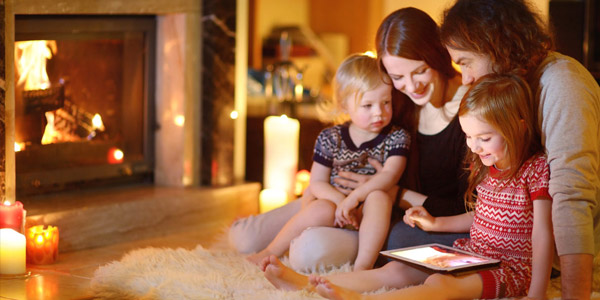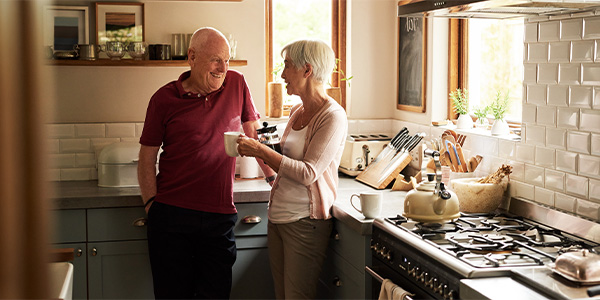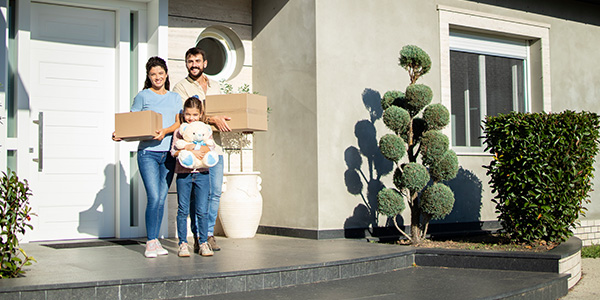Homeowners
Take Extra Precaution to Prevent House Fires This Winter
March 1, 2016
While this winter has taken longer than usual to cool off, the normal fall of temperatures is beginning to set in. Many people in colder states are bundling up when going outdoors. When they're indoors, they are likely trying to keep warm by snuggling up next to a fire, lighting candles, and plugging in electric blankets and space heaters.
While this sounds like the cozy winter images of storybooks, the reality is these practices can have some serious consequences. According to the U.S. Fire Administration, half of all house fires occur in December, January, and February. Heating equipment is a major cause of one-sixth of these fires.
It's important to stay safe during these colder months. However, that doesn't mean you have to pack up your space heaters and close off your fireplace for good. Practicing some safe habits can greatly decrease the risk of a house fire this winter season.
Use the Timer
When heading out on a snowy day, you probably layer sweaters, jackets, scarves, and hats. When you get inside, you shed these layers and probably crank the heat up. However, some homes have cold patches in certain areas of the house. Space heaters are a saving grace for many people. However, these handy devices are one of the leading causes of fires, according to Realtor.com.
Many space heaters have a timer that automatically turns off the heater after a specified amount of time. This will prevent anything from overheating and burning due to forgetfulness or falling asleep without turning off the heater. Peter Duncanson, ServiceMaster's director of disaster restoration training, explained that the majority of fires caused by space heaters occur when everyone in the home is asleep.
Heating blankets are another popular way to keep warm in the winter. According to Apartment Therapy, newer versions of these handy blankets are safer than some of the older models. Some come with a timer built-in, making them even less of a safety hazard. Setting the timer is a good idea, should you begin to drift off with it still turned on.
Give It Space
It's easy for clutter to build up in your home, but it becomes a hazard when flammable objects are left too close to your heating devices. Space heaters, candles, and stoves should all have a three-foot clearance from any paper, clothes, rugs, curtains, and anything else that could easily catch fire, the American Red Cross advised. Realtor.com said this distance should be increased to five feet for fireplaces. According to the National Protection Agency, more than half of candle-related fires were a result of having flammable objects too close to the flame.
It's also a good idea to make this area off-limits to any children or pets in the house as well, the National Fire Protection Agency explained. Getting too close could result in some serious burns. Make sure your kids understand where the off-limits zone is and why it's dangerous. Also, be sure to have an adult's supervision whenever kids or animals are in the room.
Keep an Eye on Candles
Realtor.com reported candle sales have increased by 50 percent in the past decade. Popular brands of candles with various scents have attracted many to use candles in their home to set a relaxing or fun atmosphere. Other people use candles as a cost-effective heating device, according to Lifehacker.
According to the National Fire Protection Agency, between 2009 and 2013, about 25 candle-related fires were reported every day. These fires resulted in 89 deaths and more than 800 injuries.
Don't Overwhelm the Outlet
With so many devices being plugged in during the winter, many people make up for the lack of available outlets with adapters and extension cords. This may make life more convenient, but it also increases the risk of a house fire. According to Chippewa Falls-based NBC affiliate, WEAU, electrical overloads account for more than one-third of fires. Realtor.com also reported more than 3,000 fires were caused by overloaded or damaged circuits.
"A lot of extension cords or lights may be plugged into one outlet," Justus Busse, Chippewa Falls Fire Inspector, said, according to WEAU. "Multiple items plugged into one. We like to see if we can power strips being used if they need extra outlets."
Realtor.com also suggested checking on cords to make sure they are working properly. If cords feel warmer than usual, it might be a sign they aren't working properly or there are too many devices plugged into one area. Also, avoid running cords under rugs or up against the walls.
Watch Your Cookies Bake
According to the U.S. Fire Administration, cooking is the number one cause of fires in the winter. During December, you may be using your oven more than usual, as many people have friends and family over throughout the month to celebrate the holiday season or to ring in the new year. However, you must keep careful watch over anything baking in the oven or cooking on the stove.
Busse agreed with this statement, saying he sees more cooking-caused fires than any other kind.
"Mostly it's unattended cooking which is the cause of those, they get sidetracked go do something else and forget that they have something on that stove," he said.
If the oven or stove is on, whether you have put that pie in the oven or not, be sure to always stay in the kitchen to make sure everything is going smoothly. House fires can cause a lot of devastation to homeowners. However, this risk can easily be mitigated by taking some extra precautions this winter.





 Smart Moves Start Here.
Smart Moves Start Here.